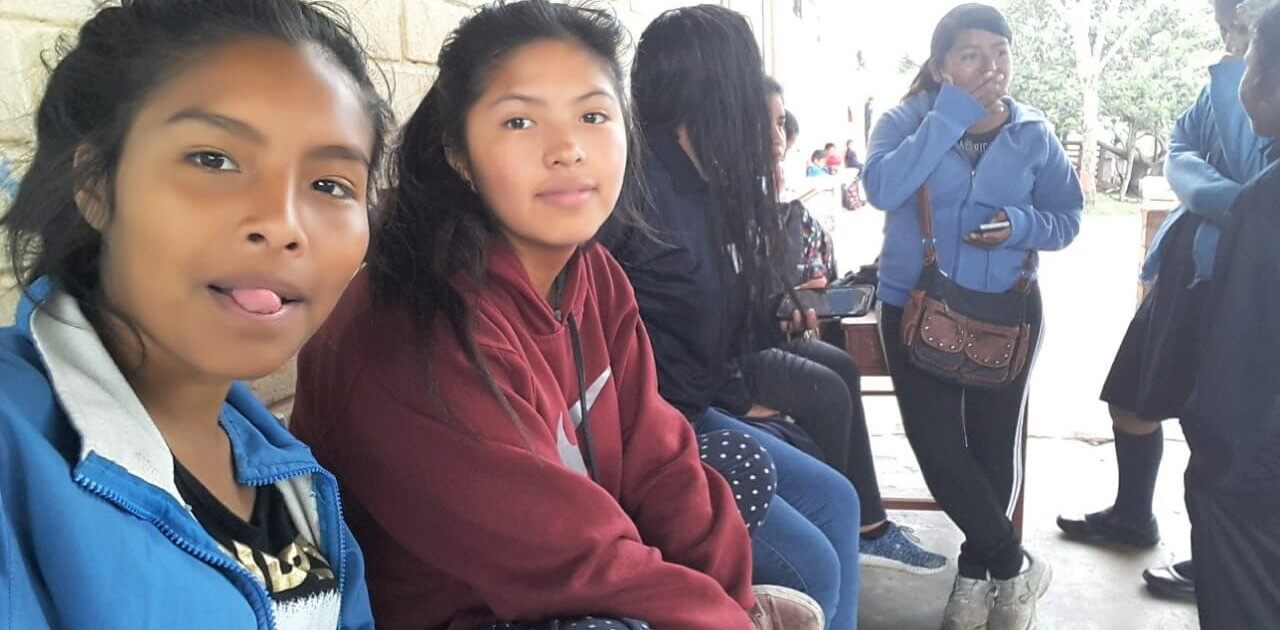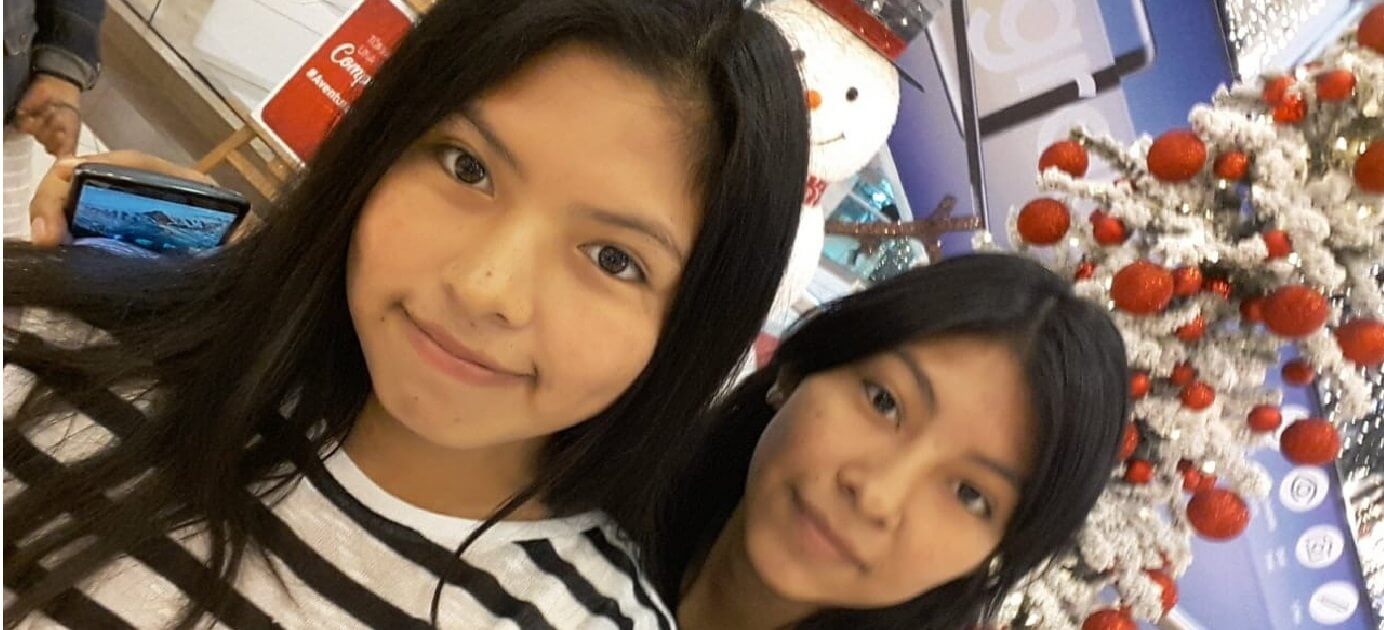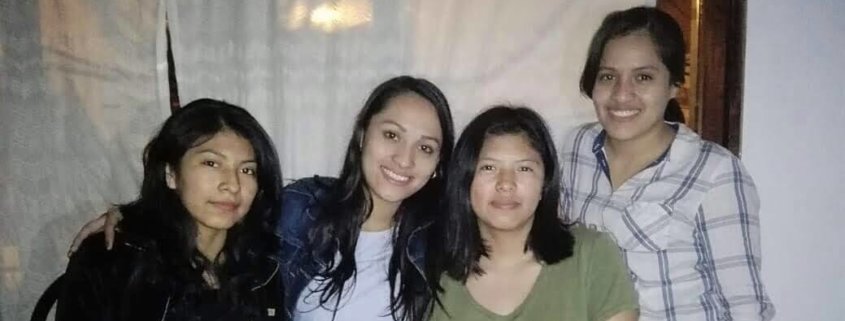Young Voices from Peru: “Manzana”
This second story in a series about recent high school graduates from our partner community, the Sagrada Familia children’s home in Peru, is about Vilma. Today, she’s studying interior design in Lima, but before being taken in by Global Volunteers’ community partner, Miguel Rodríguez, she lived with few educational opportunities. Read on to learn about her life – her dreams, struggles, and the role Sagrada Familia and volunteers have played in helping prepare her for the future.
Tell us about yourself, Manzana. What was your path to Sagrada Familia?
Everyone knows me as Manzana (“apple” in Spanish), because I looked like an apple when I was little. But my real name is Vilma Rosmery Usca Hachercana. I came through my cousins who were here at Sagrada Familia. They came first, then my siblings came, then I came. I come from the town of Espinar, in Cuzco. The mayor wanted to support the children from the community because the quality of education was really really low there. Also, parents would have no chance of providing a college education for their children. So the mayor would help kids who wanted to study to go to Sagrada Familia to get more educational opportunities. The kids who wanted to get ahead, who had a goal, a dream, who wanted to go to college, they came here. That was the main reason other kids and I came. Besides that, I came because my siblings were here. I wanted to have the same opportunities they had.
Where are you currently living? Do you have a relationship with your birth family?
I’m staying at Sagrada Familia now because of the lockdown for Covid-19. But I live in the La Molina district, south of Lima, with other alumni from Sagrada Familia where we rent a small apartment. I do talk to my parents once or twice a week. Every time I’m on vacations, I try to go there for at least a month. It takes 24 hours to get there, and it’s expensive, so I don’t visit them as often as I would like.

What are your interests and hobbies? How do you spend your free time?
I like reading, playing, drawing. I like making people feel good, making them laugh. On a personal level, I also like to work on my own self-esteem since the time I came to Sagrada Familia. I also like to help the other kids now, with their chores and with educational activities here on the campus.
How would you describe your childhood at Sagrada Familia?
Sagrada Familia was nice, beautiful. It opened many doors that I myself had closed when I was living with my parents. Here, I socialized with other people, heard their stories, heard their problems; it all helped me. I realized my issues were small compared to other peoples’. They always had a smile; they never said, “oh this happened to me, that’s why I am like this.” They would say, “let’s move on, you can move on.” That made me change lots of things about my perspective of life. These experiences closed one phase in my life and opened another one. I started to be myself. It wasn’t all about my mom and dad anymore.
My parents were overprotective; I used to go straight home from school, and that was my life. When I came to the community, I opened myself. I used to be self-conscious, shy. I couldn’t just talk to a person. If you talked to me then maybe I would talk. Now you can see that I’m more spontaneous. I can talk to you; I can ask you how you are doing, if there’s something I can do for you. Besides this, teacher Miguel helped me a lot. He guided me, asked me how I was doing all the time. They are always looking after you. It’s like a second family, but a lot bigger.
“Here, they never say, ‘oh this happened to me, that’s why I am like this.’ They say, ‘let’s move on, you can move on.’ That made me change lots of things about my perspective of life.”
Manzana
Do you want to share any anecdotes about living at Sagrada Familia?
One day we were at the community walking to school. There was this kid who comes out of nowhere running and shouting like Tarzan towards me. I got scared so I looked for a place to hide. I saw a hole in the ground, so I threw myself in there. All my school utensils went up in the air. “I wasn’t going to do anything to you,” he told me as he cracked up. I said: “I was so scared of you!” But, there were so many people laughing. [LAUGHS] I was really embarrassed, and I have many funny stories like that.”

What encourages you when you confront obstacles in your life?
I realize that coming out of Sagrada Familia is coming out from a safe place. So facing reality, cruel as it is, is hard. Another challenge was feeling bad about the things my classmates knew that I didn’t know academically. But I decided that it would not put me down, and in that, my sister supported me as well. Third, there is the issue of materials and tools that I don’t have in order to do my coursework. But despite that, I have always done everything I can to be able to finish my homework and projects.
How did Sagrada Familia help you prepare for your career?
I wanted to study interior design. But I didn’t know that it was actually a major in college. So I though I should study architecture, and then specialize in interior design. Once, we had an art competition where we were asked to design some brochures. So I said to myself, “Ok, whatever, let’s draw,” and when my drawing was chosen, I then said to myself, “I know how to draw.” At that moment, I guess I actually believed I was good at drawing! There were also teachers who would tell me that I was good at drawing. I also had this notebook where we had to take notes on the Greek Gods, and I would just fill the whole thing with drawings. My teachers would tell me that I would be good at architecture. So I started liking that career. I also took a vocational test that showed drawing, design, something where there is more color. So in the end, the career I chose is more a way to express what I fee — through a project for a client or a concept that I’m given.
What are you doing right now academically?
I study interior design and have been working on a project for the Community (Sagrada Familia) with all the knowledge I have acquired. I’m evaluating what we are missing, what we can change, what we have or lack (here on campus). I have also been working on supporting the kids here. They are really creative, really good at drawing. I want to give them what I didn’t have when I was younger, before I started my studies. I can tell them, “Hey, you can do this; I can teach you this.” They have talent on their own, but If I polish it, I would be telling them, “You can achieve more things, you can grow, and you can have the career you want.” That’s the idea of what I’m doing right now.
What are your plans for the future?
First, I want to finish my career studies, and then join a design firm. Of course I want to have my own business, but I need to get more experience by working for a while at an established design firm.
What has been your experience with Global Volunteers?
They really help us. If they are asked to do something, they are always willing to help. They never complain, they always have this desire to help, and that is really nice. I have had many experiences with the volunteers, but one I especially remember was when we were building tables for the dining hall. We were trying to drill screws into the tables. One of the volunteers came to help us. I thought he looked like a guy who would know how to do it. But he couldn’t do it, and in the end one of the girls from my home (dormitory) did it. That was funny!
At the same time, the kids here know that the Global Volunteers are giving away their time to be with us. Second, they have some traits that are good for us. For instance, they are more punctual. Kids see that. We can hear that we must be punctual, that we must be more organized. But kids copy what they see.
“My parents and their parents and so on did not have a college education, they were all farmers. But we wanted to be professionals. We broke that chain.“
Manzana
In what major way has Sagrada Familia led you to where you are today?
The Community has been like a place where we broke some chains. My family has worked in the fields as farmers for many generations. Their generation, and those before did not have a college education, and they were all farmers. But we (I and my brothers and sisters) wanted to be professionals. We broke that multi-generational chain of farming as the only option. My older siblings went to college and are now professionals. This is where it all happened. I’m so glad my parents allowed me to come here, and for Miguel’s guidance, so I could have all the experiences that have enabled me to pursue a college education. I feel very fortunate.
You may also like:




Leave a Reply
Want to join the discussion?Feel free to contribute!